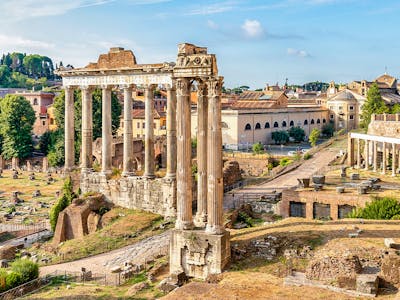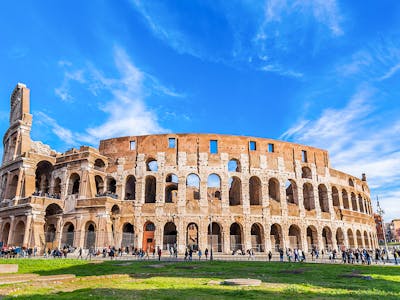The Domus Aurea, or "Golden House," is an ancient Roman palace that once dazzled with its opulence and grandeur. Built by Emperor Nero in the heart of Rome, it featured ornate gardens, intricate frescoes, and stunning architecture that inspired awe and envy. Today, visitors can explore the remains of this magnificent complex and marvel at its enduring beauty.
Domus Aurea in a Nutshell
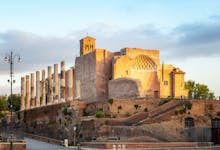
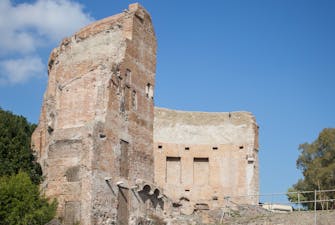
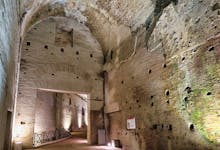
Handy information
| 👩👩👶👶 Age restrictions: | All Ages |
| ⏰ Suggested Duration: | 1 hour |
| ☀️ Best Time to Visit: | Early Morning |
| 🎟️ Domus Aurea Tickets: | €15 |
| 🚄 Closest metro station: | Cavour Station |
Must See at Domus Aurea
The Octagonal Room
The Convivium Room
Frescoes
Colle Oppio Pavilion
Domus Aurea Opening Hours
Friday - Sunday: 9 AM to 6:15 PM
Closed on Mondays, Tuesdays, Wednesdays, and Thursdays
Domus Aurea Address
Via della Domus Aurea, 00184 Roma RM, Italy
Get Directions
Why Is Domus Aurea Worth Visiting?
- Historical Significance: Domus Aurea was constructed by Emperor Nero in the 1st century AD making it an impressive archaeological site
- The architecture of Domus Aurea is truly breathtaking structure, featuring ornate frescoes, intricate mosaics, and grandiose structures that showcase the technical and artistic skills of ancient Roman builders.
- Visiting Domus Aurea provides an excellent opportunity to learn about ancient Roman history, art, and architecture. A delight for all ages.
- Visiting Domus Aurea is a unique experience as the site has limited access due to its fragile and delicate nature.
- Domus Aurea is situated on Esquiline Hill, which provides breathtaking views of the surrounding cityscape.
Domus Aurea Recommended Tickets
As of now, the Domus Aurea can be visited using guided tour tickets.
The History of Domus Aurea
The Domus Aurea is the successor to Nero's first attempt at building a lavish palace for himself. The Domus Transitoria was in the midst of construction when it was destroyed in the Great Fire of Rome in 64 AD. The basic structure for the Domus Aurea or the 'Golden House' was constructed between 64 AD and 68 AD on a large piece of land on the Oppian Hill between the Palatine and Esquiline Hills. Emperor Nero personally supervised the construction of the structure with the help of his architects Celer and Severus. He filled it with stunning Roman artworks, highly decorated rooms, and pools. After Emperor Nero committed suicide, the palace was occupied by Emperor Vitellius. The Domus Aurea was so opulent that it was considered a symbol of shameful decadence. It was later stripped of its marble, jewels, and finery.
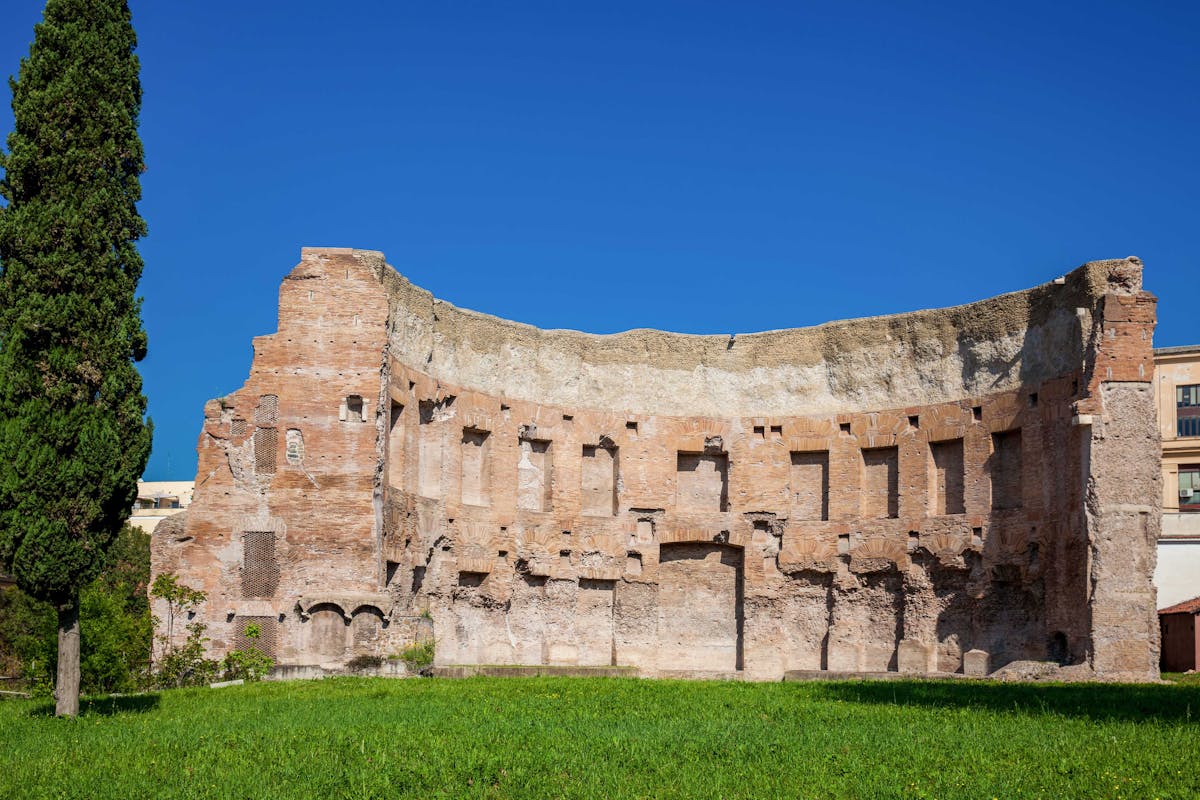
Domus Aurea Architecture
The Domus Aurea is renowned for more than just its size as a historical palace. During its construction, the Golden House possessed features indicative of a palace way beyond its time. The Domus Aurea was designed with a grandiose display of architecture, featuring ornate frescoes and intricate mosaics. Many of the rooms were adorned with marble floors and carved ivory walls, while some were even covered in rare gemstones. The Domus Aurea was also filled with sculptures of mythological creatures and figures from ancient Roman mythology. The structure incorporated many distinct areas, such as the Colle Oppio Pavilion, which had its own set of gardens and decorations. Additionally, the palace featured a number of courtyards, baths, banquet halls, pools, and other decorative elements.
Domus Aurea - Highlights
1The Octagonal Room
The Octagonal Room is considered to be one of the most striking features of the Domus Aurea. It was constructed under the orders of Emperor Nero, and boasted a remarkable and intricate mosaic-like ceiling that depicted scenes from mythology. This breathtaking ceiling can still be seen today, with its intricate designs and detailed colors highlighting its beauty.
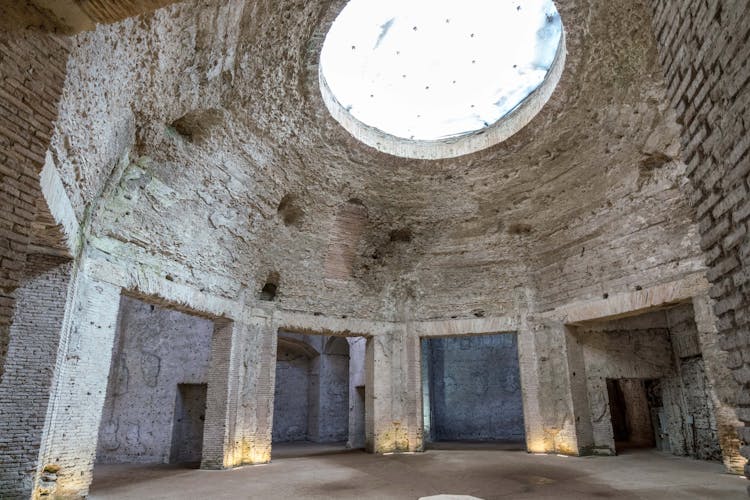
2Colle Oppio Pavilion
The Colle Oppio Pavilion's gardens can be found in the southern area of the Domus Aurea. Visitors can enjoy stunning views of the nearby lake, vineyards, fountains, and fields that have remained largely unchanged since the time of Emperor Nero. The gardens cover an area of 125 acres and include parklands and lakes. Located to the south of the Domus Aurea are the maginificent bles to free the trapped fishes.

3Frescos
The Domus Aurea featured a variety of stunning frescos that have survived throughout history. These frescos depicted a range of scenes, from mythology to everyday life. Many of these frescos still exist today, with some dating back as far as the first century BC!
%20Domus%20Aurea.jpg?fm=pjpg&auto=compress&w=750&h=500&crop=faces&fit=min)
4Ulysses and Polyphemus Mosaics
The Domus Aurea features the rare and archaeologically significant mosaic of Ulysses and Polyphemus, which is still on display. The mosaic depicts Ulysses offering wine to Polyphemus, the one-eyed giant, who is also his captor. This ancient and vivid mosaic provides a great example of the intricate artistry found throughout the palace.
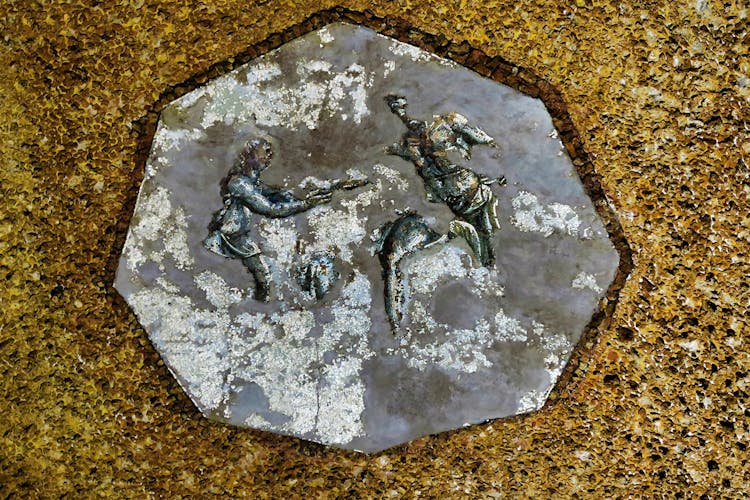
5Convivium Rooms (Dining Rooms)
The Domus Aurea featured a number of luxurious dining rooms that were lavishly decorated with ivory and mosaics designed to host grand feasts and banquets. The most notable banquet hall is the revolving dinning room that rotated on an axis, displaying the extraordinary engineering capabilities of the time.
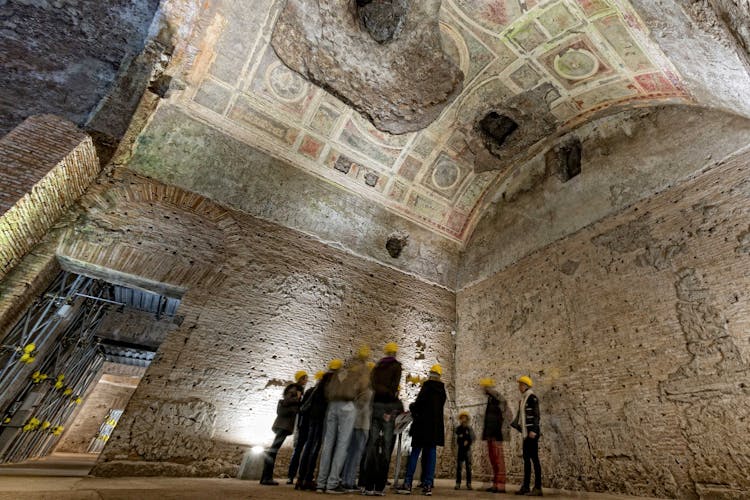
Best Time To Visit Domus Aurea
The best time to visit the Domus Aurea is during the summer months, from June to August. The Domus Aurea is open year-round and it is best to visit during the summer months when the weather is warm and pleasant. You do not have to worry about the crowds at the Domus Aurea as tickets are limited and only a fixed number of people can visit at a time, giving you ample breathing space and time to explore the archaeological site. It is also advised to visit in the mornings and the evenings as you may avoid the heat of the afternoons.
You can also find out the Best Time to Visit Rome.
Domus Aurea Opening Hours
- Friday to Sunday - 9 AM to 6:15 PM
- Closed on Mondays, Tuesdays, Wednesdays and Thursdays
- The Domus Aurea is closed on 25th December every year
Getting There
- By Metro: To reach the Colosseo station, take the metros MEB or MEB1. The Domus Aurea is located within a 5-minute walking distance.
- By Bus: Hop on board buses 51, 75, 85, or 87 to reach the closest bus stop near the Colosseum. Within a five-minute walk, you'll arrive at your destination.
- By Taxi: Another option is to take a taxi, which can take you directly to the entrance of the park. The distance from there to the main door is approximately a two-minute walk.
Insider Tips to Visiting Domus Aurea
- Make sure to book your tickets in advance as the Domus Aurea as tickets are limited and fixed for each day.
- Wear comfortable shoes as the palace grounds are quite expansive and require a lot of walking.
- Bring a bottle of water with you, as the areas within the palace can become quite warm.
- Bring a camera with you, as the frescos and mosaics throughout Domus Aurea are truly stunning and worth capturing in a photograph.
- Don't forget to check out the occasional exhibits located in the palace. These exhibits feature stunning installations by various contemporary artists.
- Before leaving, take some time to explore the gardens surrounding Domus Aurea.
Interesting Facts about Domus Aurea
Here are some facts about the Domus Aurea that will enrich your visit.
- The Domus Aurea was built in 64 AD as a lavish palace for Emperor Nero, and it is considered one of the largest and most extravagant structures ever constructed in Rome.
- Although much of the palace has fallen into disrepair, some of its exquisite mosaics and frescos have remained intact over the years.
- The palace was so grand that it is said to have featured a hydrologically powered rotating dining room!
- The Domus Aurea was abandoned after Emperor Nero’s death and later stripped of its grandiose decorations under Rome's succeeding emperors.
- In 1980, UNESCO declared the Domus Aurea a World Heritage Site, recognizing its immense cultural and historical value.
Restaurants near Domus Aurea

This classic Italian trattoria is a great place to grab a quick bite before visiting Domus Aurea. Located just a few blocks away, the restaurant serves up delicious pizzas and classic Roman dishes.

Situated just a few minutes from the entrance of Domus Aurea, Pasqualino Al Colosseo serves up delicious Italian dishes in a cozy and inviting atmosphe

Aroma is a stylish restaurant located just around the corner from Domus Aurea. The menu features classic pasta, and meat and fish dishes. Don’t miss out on their great view of the Colosseum!
Hotels around Domus Aurea
Luxury Stays
Economical Stays
Other Attractions Around Domus Aurea
Frequently Asked Questions
What are the opening hours of the Domus Aurea?
What is the best way to get to the Domus Aurea?
What are the ticket prices for the Domus Aurea?
Are guided tours available at the Domus Aurea?
Can I take photographs inside the Domus Aurea?
How long does it take to see the Domus Aurea?
Ready to explore Rome?
Find our detailed Rome travel guide, filled with curated itineraries, top hotels in the city, best restaurants, recommended tours, attractions, culture tips and much more!


